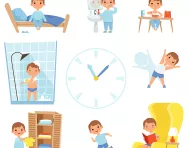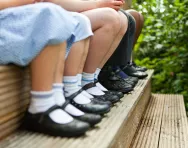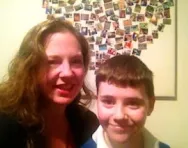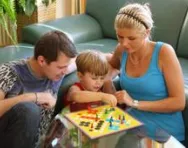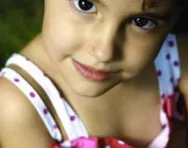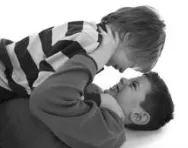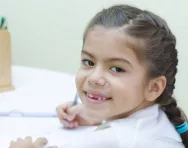Important update from TheSchoolRun
For the past 13 years, TheSchoolRun has been run by a small team of mums working from home, dedicated to providing quality educational resources to primary school parents. Unfortunately, rising supplier costs and falling revenue have made it impossible for us to continue operating, and we’ve had to make the difficult decision to close. The good news: We’ve arranged for another educational provider to take over many of our resources. These will be hosted on a new portal, where the content will be updated and expanded to support your child’s learning.
What this means for subscribers:
- Your subscription is still active, and for now, you can keep using the website as normal — just log in with your usual details to access all our articles and resources*.
- In a few months, all resources will move to the new portal. You’ll continue to have access there until your subscription ends. We’ll send you full details nearer the time.
- As a thank you for your support, we’ll also be sending you 16 primary school eBooks (worth £108.84) to download and keep.
A few changes to be aware of:
- The Learning Journey weekly email has ended, but your child’s plan will still be updated on your dashboard each Monday. Just log in to see the recommended worksheets.
- The 11+ weekly emails have now ended. We sent you all the remaining emails in the series at the end of March — please check your inbox (and spam folder) if you haven’t seen them. You can also follow the full programme here: 11+ Learning Journey.
If you have any questions, please contact us at [email protected]. Thank you for being part of our journey it’s been a privilege to support your family’s learning.
*If you need to reset your password, it will still work as usual. Please check your spam folder if the reset email doesn’t appear in your inbox.
What is a visual timetable?
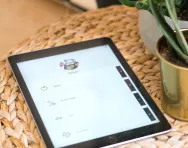
Everyone needs some structure in their life. As adults, we rely on diaries, calendars and to do lists to help us function, and children benefit from having a pattern to their day, too.
Visual timetables can be a useful tool for helping children see what’s going to happen over the course of the day. They are used to great effect with children who have special educational needs (SEN), but can be helpful for neurotypical kids as well.
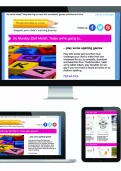
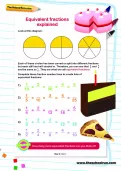
Start a unique learning programme!
- Weekly programme for each school year
- Worksheets sent direct to your inbox
- Keeps your child's learning on track
What is a visual timetable?
A visual timetable is a schedule that uses objects, photos, pictures or symbols to show what’s planned for a child’s day. ‘It can take many forms, but the most important thing is that it’s highly individualised and tailored to the needs of the child,’ explains Sheilagh Johnson, a teacher at Radlett Lodge, a National Autistic Society school.
There are several different types of visual timetable. These include:
Object schedules
The simplest version of a visual timetable, where physical objects are attached to the timetable by Velcro: for instance, a plastic cup might be used to represent snack time, and a toy car to show when it’s time to go home from school.
‘It may only have two things on it: what is happening now, and what is happening next,’ Sheilagh says.
‘The child is supported to remove the object relating to an activity when it’s finished, and move the next one to the top of the list, so the “next” becomes the “now.”’
Photographic schedules
Photos are taken to represent the activities and tasks that will take place over the course of a child’s day and attached to the timetable in the correct order.
Again, this could be a simple ‘now and next’ timetable or have a number of different steps, depending on the child’s needs.
Picture symbols
Pictures are used to show children what’s going to happen during the day. For example, a picture of a stick person next to a clock represents waiting, while a picture of a person with their finger on their lips would show it is time to be quiet. Radlett Lodge School often uses symbols from the Widgit Communication in Print system.
‘The picture-only symbols can then begin to have symbols with a single word underneath as the child begins to show emergent reading skills,’ Sheilagh explains.
Social stories
A social story is a written narrative with accompanying pictures which illustrates specific situations, problems and challenges and helps children understand how they might approach them.
How do they help children?
Visual timetables can be beneficial for children with a range of special needs. They can help to provide structure and routine, encourage independence, prevent frustration, confusion and anxiety and build confidence.
Visual timetables are often used with children who are on the autism spectrum, helping them make sense of everyday life. ‘Research has shown that autistic people have a high baseline level of anxiety on a day-to-day basis, and need to have clear structure and expectations to help them to manage it,’ says Sheilagh.
They can also be helpful for children who have SEN that affect their ability to concentrate or organise themselves, such as dyspraxia, attention deficit hyperactivity disorder (ADHD) or attention deficit disorder (ADD). Children who suffer from anxiety and related problems like selective mutism and school phobia can find them useful and reassuring, too.
Timetables need to strike a balance between showing enough detail and being simple enough for children to understand. ‘Children need to be able to use it when they’re emotionally dysregulated, not just when they’re calm, otherwise it ceases to be a support at all,’ Sheilagh says.
Visual timetables are not exclusively used for children with additional needs; all children can benefit from having a clear and concise overview of what’s going to happen during their school day, and they’re particularly useful for children are only just beginning to read.
How are visual timetables used in schools?
Visual timetables are commonly found in classrooms across all key stages, from early years to post-16, albeit in different forms.
In the early years of mainstream schools, a visual class timetable is usually displayed somewhere prominent, such as at the front of the room, and is updated daily with the activities that are planned for that day.
To encourage children’s early reading skills, the pictures on a class timetable are often accompanied by a printed word, helping them make the association between the picture and the word. Sometimes, for more able pupils, the time is written prior to the activity, e.g.
10am: Maths
10.30: Break
And so on.
Children who have SEN may have their own personal visual timetable to use at school. This will be tailored to their individual needs and updated by their teacher, teaching assistant or special educational needs coordinator (SENCO) when necessary. For example, if they’re going on a school trip., they may use a small version of their timetable to support them in the community.
Using visual timetables at home
Many parents find that visual timetables are a useful tool for home life, whether they have a child with SEN or just need to encourage them to be more organised and independent. You could, for example, make a timetable that shows the tasks your child has to do before school: have breakfast, get dressed, brush their teeth, and so on.
There are many different templates and ideas for making visual timetables on Pinterest. There are also apps that can help you make schedules for your child, such as picturepath.
‘Don’t spend too much time or money on a visual timetable; you may need to throw away things that don’t work and try something else,’ says Sheilagh. ‘You can also weave in motivators, such as five minutes watching Peppa Pig on the iPad after your child has cleaned their teeth.'
You can make new visual timetables for events that are out of the ordinary, such as taking a trip on a train, particularly if your child is anxious in new and unfamiliar situations.
How do visual timetables change as children get older?
Your child’s timetables may well evolve as they get older and become more organised, better at reading, and more familiar with their basic daily routines.
‘They might progress from an object schedule to a photo or picture symbol schedule, and eventually to a written list, although some children with learning disabilities might stop a level that works for them, and that’s absolutely fine,’ Sheilagh says.
‘What matters is that you develop timetables with your child to meet their individual needs.’
For more information about autism, including education tips, visit the National Autistic Society’s website.

